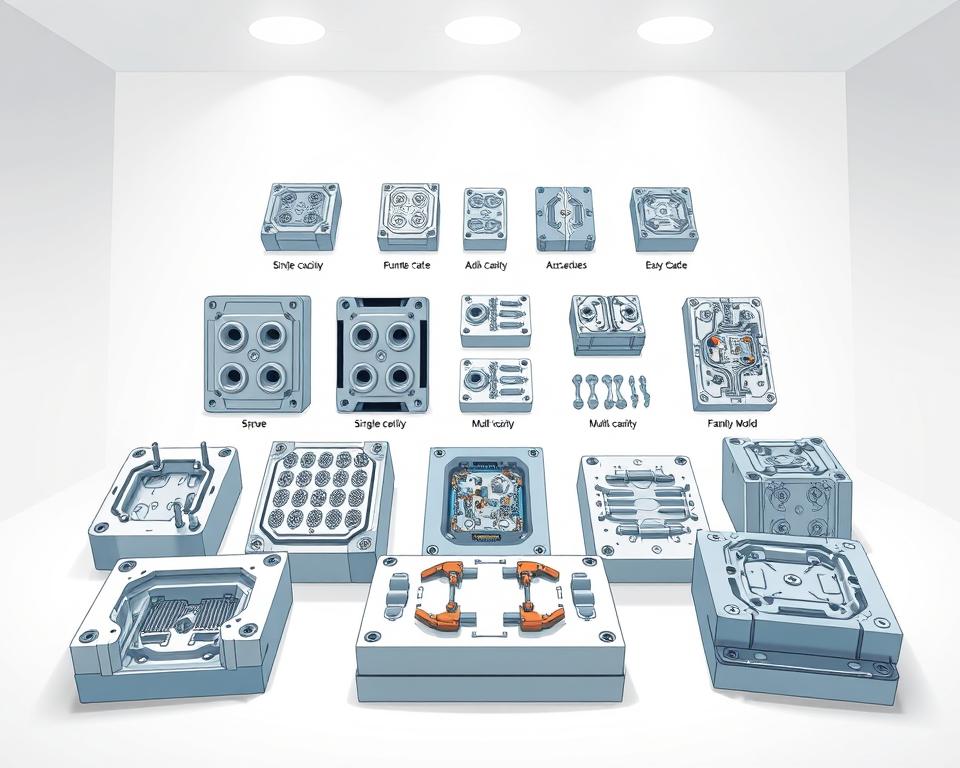A Comprehensive Look at Selvedge Denim Material
One solitary set of antique Levi’s 501s hailing from the 1940s fetched $87,400 at an auction. What caused these jeans to outprice a luxury vehicle? It all comes down to their selvedge denim fabrication.
This top-tier denim signifies far more than mere cloth. It connects us to a time when James Dean wore his 501s in Rebel Without a Cause and Marlon Brando defined cool in The Wild One. These cultural icons didn’t just wear jeans. They chose Nep denim woven on antique shuttle looms.
Artisanal denim gets its name from the self-finished edges that prevent fraying. The word “selvedge” fuses “self” and “edge” to depict this singular weaving approach. Differing from factory-made denim, each yard of selvedge denim material requires patience and expertise to craft.
Its feel conveys a history through faint irregularities and innate variations. Each iteration gains personality as the indigo lightens. This personal evolution makes heritage denim special to collectors and fashion enthusiasts alike.
Numerous people assume high-end denim endures beyond ordinary jeans. The fact is somewhat more complex. Selvedge build yields exquisite cloth with neat borders and deep texture. However, sturdiness relies on cotton caliber and heft, not merely on weaving style. What differentiates artisanal denim is its knack for aging with grace and creating singular fading designs in the long run.
Defining Selvedge Denim Material
Selvedge denim fabric is distinct from regular denim due to its unique construction and finished edges. It’s named for its “self-edge,” a tightly woven band that prevents fraying. This top-tier fabric embodies a commitment to slow fashion and classic artisanry, distinguishing it from factory-produced denim.

Decoding Self-Edge Construction
The word “selvedge” fuses “self” with “edge,” indicating material with a tidy, sealed edge. This narrow selvage runs along both sides, removing the requirement for added finishing. Heritage mills make it about 30–32 inches wide, as opposed to modern denim’s 60-inch breadth.
How Shuttle Looms Create Unique Fabric Edges
Shuttle-loomed denim’s character comes from vintage weaving machines that weave at slower speeds. These looms weave a single weft yarn across the warp threads in one motion. This approach produces:
- Natural irregular slubs
- A softer hand-feel than modern denim
- Securely finished edges that resist fraying
- Genuine irregularities prized by denim fans
How Selvedge Differs from Standard Denim
Regular denim comes from projectile looms firing weft yarns over broader widths. Such weaving leaves loose edge fibers requiring overlock stitching to stop fraying. Selvedge denim fabric, however, requires extra time in production. It offers superior durability and a unique aesthetic, justifying its higher cost.
The Heritage and History of Shuttle-Loomed Denim
The legacy of heritage denim commenced in U.S. textile mills of the 1800s. Shuttle looms played a vital role, crafting cloth with self-finished edges to stop fraying. This method produced indigo-dyed denim at a slow, meticulous pace, ensuring each yard was crafted with care. The narrow width of this fabric became a hallmark of artisanal denim production.
American Mills of the 1800s to Today’s Resurgence
For over a century, American mills relied on shuttle looms. Names such as Cone Mills and White Oak furnished top denim to workwear makers. By the 1970s, faster projectile looms took over, replacing most shuttle equipment. This shift was driven by the need for cheaper, mass-produced jeans. Numerous old mills shuttered or updated, letting antique looms sit idle.
How Japan Revived Selvedge Denim
In the 1980s, Japanese manufacturers revived American shuttle looms. The Osaka Five brands led this revival:
- Studio D’Artisan
- Evisu
- Fullcount
- Warehouse
- Denime
They combined American heritage style and Japanese meticulousness. They researched antique Levi’s templates, reproducing classic indigo denim textures. By 2000, Japan dominated the artisanal denim market globally.
Relevance of Classic Weaving Now
Shuttle looms produce unique fabric characteristics that modern machines can’t match. Their reduced-speed weaving enables uneven textures and richer indigo absorption. Hardcore denim fans treasure these quirks as proof of real craftsmanship.
| Shuttle Loom Features |
Modern Loom Features |
| 29-31 inch fabric width |
60+ inch fabric width |
| 3-4 yards per hour |
15-20 yards per hour |
| Natural irregularities |
Uniform texture |
| Self-finished edges |
Cut edges requiring overlocking |
Crafting Premium Denim with Vintage Looms
The creation of premium denim starts with the rhythmic motion of vintage shuttle looms. These devices vary greatly from today’s looms. They weave yarn across the fabric width in a single thread, locking the edges without finishing. This technique assures a crisp, fray-resistant edge on selvedge denim.
Vintage looms weave at a slower pace, producing just 5-6 meters of striped denim fabric daily. This is in stark contrast to modern machines, which can weave 200 meters. The slower speed benefits the yarn in several ways:
- Less tension on fibers creates a softer hand feel
- Organic irregularities stay put, granting unique texture
- Uneven surfaces lead to distinctive fading patterns
- Narrow fabric width (typically 29-32 inches) reduces cutting waste
Manning these age-old looms calls for seasoned artisans. Weavers tweak tension, keep rhythm, and handle fixes. Each shuttle loom carries its own character. Some date back to the 1920s, needing specific knowledge passed down through generations. This manual process renders shuttle-loomed denim a genuine craft item.
The slender width of unwashed denim from classic looms provides practical perks. Pant makers utilize the selvedge edge as the outrigger seam, avoiding waste. This highlights the material’s genuine build. Each bolt tells its own tale, boasting faint differences factory lines can’t duplicate.
Differentiating Raw Denim from Selvedge Denim
Numerous denim lovers conflate raw denim with selvedge denim. This confusion arises when shopping for premium jeans. In reality, the words refer to distinct parts of denim making. Knowing the difference helps you make better choices and appreciate each type’s uniqueness.
Why Selvedge Doesn’t Always Mean Raw
Selvedge denotes the shuttle-loom weaving style that yields self-finished edges. Raw denim means unwashed fabric straight from the mill. A selvadge raw denim fabric wholesaler might offer both washed and unwashed options. Brands like Naked & Famous produce selvedge jeans, sometimes pre-washed or with stretch.
The loom process stays constant. Yet, the finishing process changes everything about the fabric’s feel and look.
Washed and Unwashed Denim Compared
All denim starts as dry denim prior to wash. Factories make both regular and selvedge variants in unwashed form. The principal distinctions are:
- Raw denim develops unique fading patterns based on wear
- Pre-washed denim offers instant comfort and stable sizing
- Sanforized raw shrinks little after initial laundering
- Unsanforized versions shrink significantly when soaked
Breaking Down Common Misconceptions
Not all raw denim comes from shuttle looms. Today’s projectile looms can also weave unwashed material. Their draw intersects as shoppers esteem resilience, personalization, and craft in selvedge and raw alike. Each style lures denim aficionados ready to devote time for bespoke fades.
Spotting Genuine Selvedge Denim Traits
If you’re shopping for rainbow selvedge denim, spotting real selvedge denim is essential. It separates you from everyday customers. Authentic selvedge denim features attributes absent in normal denim. Recognizing these markers certifies you’re purchasing genuine premium denim.
Spotting the Signature Selvedge ID
Easiest method to confirm selvedge denim? Inspect the outseam. Roll your cuffs and examine the seam on the leg’s outer side. Real selvedge denim shows a neat, sealed edge with dyed yarns interwoven. Its self-finished perimeter does away with overlock seams used in ordinary denim.
Cuffing your jeans reveals the selvedge ID, imparting distinctive flair to your look. The colored edge yarns run continuously down the outseam, creating that signature look denim enthusiasts adore. Non-selvedge jeans, on the other hand, have cut edges covered with serger stitching to prevent fraying.
Identifying High-Quality Construction
High-grade premium denim shows distinct assembly details:
- Dense, uniform weaving free of stray threads
- Clean selvedge edges without additional stitching
- Uniform edge thread color along the outseam
- Dense fabric weight typical of shuttle-loom production
Why Rainbow and Redline Selvedge Are Unique
Rainbow selvedge uses multiple tinted yarns in the ID, crafting a distinct multicolor trim. Redline selvedge, the iconic type, employs red threads in the ID and hails from classic U.S. mills. These distinctive selvedge variants fetch more owing to their rarity and visual charm. Brands often showcase these details in listings, aiding you in spotting genuine heritage denim.
Why Craft Denim Costs More
The cost of artisanal denim often shocks newcomers. A set of selvedge jeans may run three to five times higher than standard jeans.
Grasping the reasons for these prices uncovers the real worth of high-end denim.
Shuttle looms weave at a much slower pace than modern machines. While mass-production looms yield fabric swiftly, heritage shuttle looms turn out just 1–2 meters each hour. This deliberate procedure turns a roll of heritage denim into a multi-day project.
The slim selvedge widths increase expenses. Whereas conventional denim comes 60 inches wide, shuttle-loomed premium denim measures only 28–32 inches. Such narrowness demands extra planning and precision cutting to optimize usage.
Artisan denim is produced in limited lots. Suppliers like Okayama’s White Oak and Kuroki emphasize quality rather than scale. They rely on veteran craftsmen who supervise every phase:
- Hand-checking yarn tension
- Adjusting loom settings for each fabric type
- Inspecting every meter for flaws
- Managing rope-dyeing processes that take weeks
These artisans treat denim-making like fine art. They play with distinct yarns and hone indigo-dye recipes handed down through the lineage. Buying heritage denim sustains mills upholding textile customs and craftspeople passionate about their trade.
Where to Buy Black Selvedge Denim Fabric Wholesale
The premium denim market has grown beyond Japan’s traditional mills. American manufacturers now challenge, supplying multiple black selvedge denim wholesale options. To find the best supplier, it’s essential to understand quality markers and the origins of authentic materials.
Finding Quality Suppliers and Manufacturers
Top vendors underscore traditional weaving and genuine devotion to craft. When seeking a selvedge raw denim wholesale source, pick mills operating antique shuttle looms. They list full specs: fabric heft, weave design, and dye techniques.
Key Gold Selvedge Denim Producers
Gold selvedge mills emphasize luxe-colored edge yarns, enhancing denim prestige. Top factories craft these niche fabrics in small batches, drawing boutique labels. Their gold-edge thread grants a distinctive finish, setting them apart from common fabrics.
How to Procure Nep Denim and Unique Weaves
Specialty fabrics like nep denim need specific sourcing channels. This textured fabric features intentional irregularities for unique visual interest. Dealing straight with manufacturers secures supply of these specialty textiles.
| Fabric Type |
Minimum Order |
Lead Time |
Price Range per Yard |
| Black Selvedge |
500 yards |
6-8 weeks |
$12-18 |
| Gold ID Selvedge |
300 yards |
8-10 weeks |
$15-22 |
| Nep Denim |
400 yards |
10-12 weeks |
$14-20 |
Top Selvedge Styles & Variations
Selvedge denim’s realm extends past plain indigo. Currently, manufacturers produce varied textures and designs. They highlight the adaptability of shuttle-loom craftsmanship. Spanning delicate textural shifts to vivid motifs, they present distinct character that matures gracefully with wear.
Exploring Slub Denim Texture
Slub denim’s distinctive bumpy texture comes from irregular yarns. They feature thick and thin zones, yielding an organically varied fabric face. Woven on shuttle looms, they form slub-textured selvedge that fades unpredictably.
Every slub denim pair evolves a distinct fade motif. Thick slub raised zones age in contrast to smooth zones, giving each a unique look.
Herringbone Selvedge Traits
Herringbone selvedge denim fabric has a distinctive zigzag pattern, resembling fish bones. The pattern forms diagonal ribs that reverse direction periodically. This motif boosts aesthetics and reinforces the cloth’s durability.
Brands like Iron Heart and The Strike Gold routinely utilize this weave in their top-tier offerings.
Striped Denim and Other Unique Weaves
Striped denim blends different yarns to craft vertical or horizontal banding. Factories weave these patterns by switching colored threads as they work. Common variations are:
- Hickory stripe with alternating indigo and white
- Railroad stripe featuring thin pinstripes
- Wabash stripe with printed dots over stripes
| Fabric Type |
Visual Pattern |
Fade Characteristics |
| Slub Denim |
Bumpy, irregular surface |
High contrast, uneven fading |
| Herringbone |
Zigzag diagonal lines |
Subtle vertical streaking |
| Striped Denim |
Alternating color bands |
Pattern remains visible after fading |
Maintaining Your Heritage Denim
Your heritage denim requires special care to develop its unique character. Raw and dry denim, unlike typical jeans, change shape with wear. They form custom fade stories unique to you.
The initial weeks in craft denim may feel rigid and awkward. This experience is expected. The material requires wear to relax and hug your silhouette. Some denim enthusiasts speed up this process by wearing their jeans in the shower or doing squats while damp. Others choose a slower, natural wear-in routine.
Raw denim develops its best fades when you wait to wash it. Skin oils and regular friction form whiskers by the knees and honeycombs at the rear. Many wearers wait six months for the first wash, and some even a year. This discipline grants you dramatic, bespoke fades reflecting your motions.
At wash time for dry denim, invert and launder in cold water. Skip the spin cycle and hang dry away from direct sunlight. Some prefer hand washing in the bathtub with gentle detergent. Steer clear of hot water and tumble drying, which may shrink and dull fades.
Your heritage denim investment grows more valuable with proper care. Each use builds character, turning your jeans into a singular piece. The firm break-in becomes a flexible second skin mirroring your daily life.
Where to Find Quality Indigo-Dyed Denim
Selvedge denim’s comeback has created fresh opportunities for fans. Large chains now offer indigo denim, while niche shops continue premium slow-fashion offerings. This helps buyers locate real selvedge choices across price ranges for any budget or taste.
Levi’s retails the 501 Original Fit Selvedge at $148, spreading heritage craftsmanship further. Uniqlo carries Selvedge Straight Jeans for $50, drawing budget-conscious style seekers. For upscale choices, Buck Mason presents Japanese Loom State Selvedge Full-Saddle Jeans at $248. Iron Heart elevates artisan denim with its 634s-18 Vintage Denim for $385, sold at Self Edge.
American brands like Todd Snyder and Buck Mason now compete with Japanese specialists in the selvedge denim market. These brands recognize the importance of heritage weaving techniques and quality in slow fashion. Whether you shop digitally or in-store, quality indigo denim is now more reachable for U.S. buyers who value true craftsmanship.










